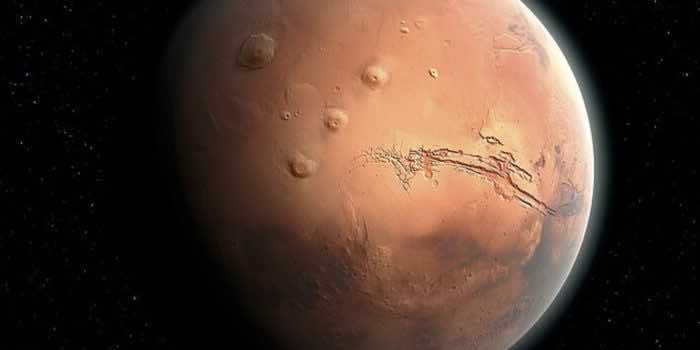A new study has revealed that a toaster-sized instrument onboard NASA’s Perseverance rover is ‘reliably’ converting carbon dioxide into oxygen on Mars at about the same rate as a small tree on Earth.
The Mars Oxygen In-Situ Resource Utilization Experiment, or ‘MOXIE’, has been successfully making oxygen from the Red Planet’s CO2-rich atmosphere since February 2021.
Now a new study published in the journal Science Advances has demonstrated that MOXIE can produce oxygen in diverse atmospheric conditions.
On each of the seven experimental runs, the instrument reached its target of producing six grams of oxygen per hour. It is almost the same rate as a regular tree on Earth.
Researchers envision that a scaled-up version of MOXIE could be sent to Mars ahead of a human mission, to continuously produce oxygen at the rate of several hundred trees.
The instrument produces oxygen on mars by first drawing the Martian air in through a filter that cleans it of contaminants.
The air is then pressurized and sent through the Solid Oxide Electrolyzer (SOXE), an instrument developed and built by OxEon Energy, that electrochemically splits the carbon dioxide-rich air into oxygen ions and carbon monoxide.
The oxygen ions are then isolated and recombined to form breathable, molecular oxygen, or O2, which MOXIE then measures for quantity and purity before releasing it back into the air, along with carbon monoxide and other atmospheric gases.

To date, experiments have shown that MOXIE can make oxygen at almost any time of the Martian day and year.
Engineers are now coming up with ways to scale the system and increase production, particularly in the Martian spring, when atmospheric density and carbon dioxide levels are high.
Dr. Hecht said: ‘The next run coming up will be during the highest density of the year, and we just want to make as much oxygen as we can. So we will set everything as high as we dare, and let it run as long as we can.’
Prof Hoffman said: ‘To support a human mission to Mars, we have to bring a lot of stuff from Earth, like computers, spacesuits, and habitats.
‘But dumb old oxygen? If you can make it there, go for it – you are way ahead of the game.’
The research was also backed up by NASA.

In addition, last week, Portuguese scientists came up with a new plasma-based technique to produce and separate oxygen within the Martian environment.
‘When bullet-like electrons collide with a carbon dioxide molecule, they can directly decompose it or transfer energy to make it vibrate,’ Dr. Guerra said.
‘This energy can be channeled, to a large extent, into carbon dioxide decomposition.
This can prove to be a beginning to produce fuels and fertilizers, allowing settlers to grow crops on the Martian surface.


